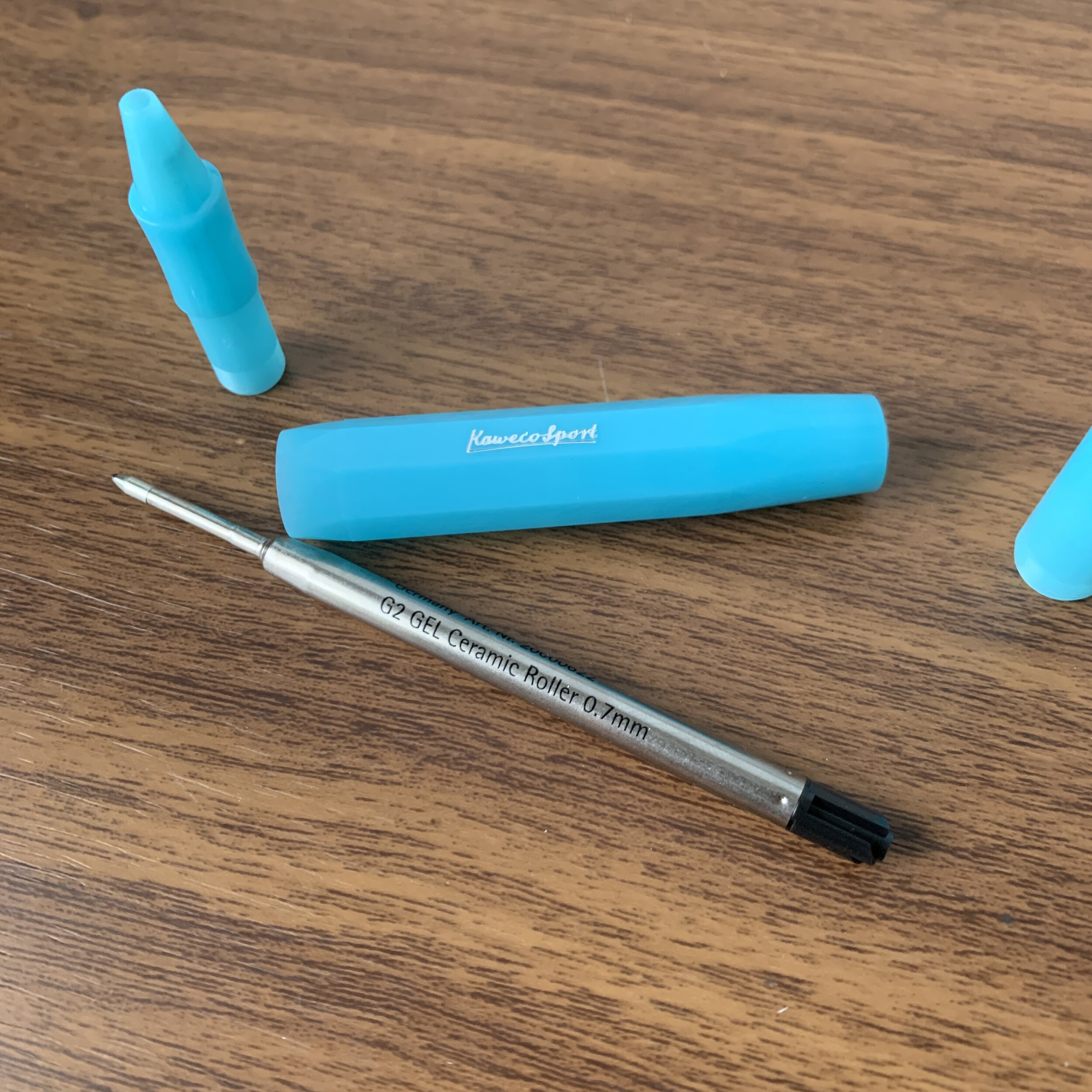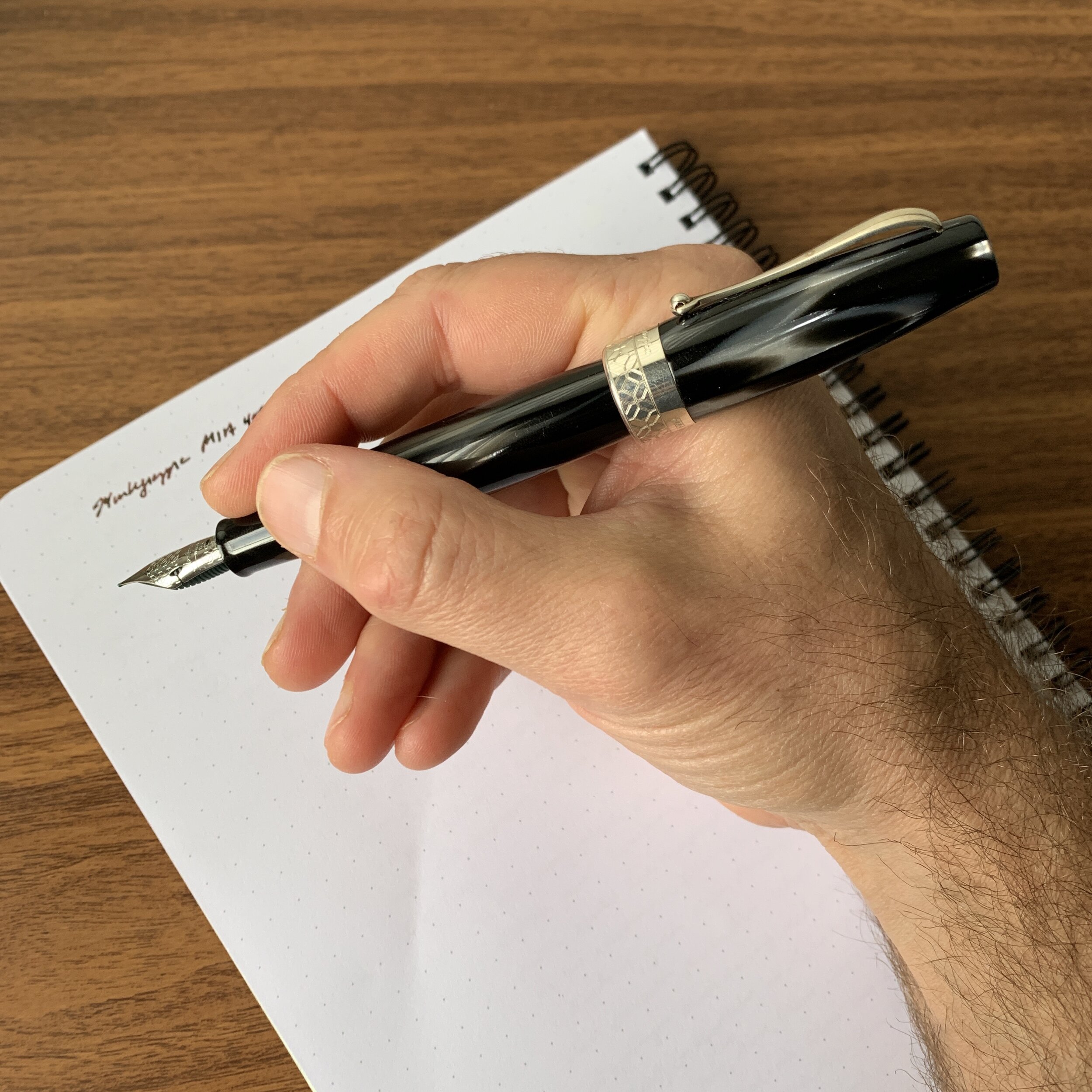A couple of weeks back I posted the “travel kit” that I had packed to take with me on vacation. As usual, I was overly optimistic in thinking I would write through three fully inked fountain pens, though I did manage to get a bit of journaling in over the course of the week. (This wasn’t necessarily due to a lack of motivation, but rather a lack of privacy/space, as the rental we stayed in turned out to be MUCH more cramped than anticipated.) I ended up spending much of my free time reading, with my annotation pen of choice being the Traveler’s Company Brass Ballpoint that I kept clipped to the front cover of my book, even on the beach.
Traveler’s Company (sometimes referred to as “TRC”) is the maker of the ubiquitous Traveler’s Notebook, formerly sold under the Midori mark but spun off around 2015 into its own group of products that includes not just the Traveler’s Notebook but a line of related accessories, including writing instruments.
A vintage bullet pencil from the 1940s on the left, compared against the modern Traveler’s Company version.
The TRC “Brass Pencil” (formerly known as the “Midori Bullet Pencil”) has been around for several years, and regarded as the modern bullet pencil that most closely imitated the vintage form factor. Although it’s a high-quality writing instrument, the market for true bullet pencils is somewhat limited, and TRC apparently decided to expand the form factor by releasing ballpoint, rollerball, and, yes, even fountain pen versions.
Today I plan to take a closer look at the TRC Brass Ballpoint. In order to maintain the traditional “Bullet Pencil” form factor, TRC developed a woodcase insert to hold the refill, which is a needle-tip hybrid ballpoint refill that I found thoroughly enjoyable to write with. Reminiscent of a Uniball Jetstream, it dries quickly and maintains a very fine line for a ballpoint pen. Best of all, the refill is relatively inexpensive, clocking in at $1.80 for one that should last you a very long time. I wrote with this pen daily for a week and have barely put a dent in the ink.
The Traveler’s Company ballpoint refill writes like a cross between the Jetstream and the Hi-Tec-C. Honestly, it may perform better for many people.
The TRC Brass Ballpoint is also available in the matte “Factory Green” finish, a special edition.
Otherwise, I enjoy the Traveler’s Company Ballpoint because it retains the vintage-style charm of a classic bullet pencil in what many will consider a more functional everyday format. This pen is comfortable to use - it feels exactly like writing with a rounded pencil - and the clip, brass construction, and overall light weight make it an excellent travel companion or pocket pen for when you’re out and about.
Takeaways and Where to Buy
While I’m not a hardcore “everyday carry” enthusiast, I have a soft spot for pocket pens, and lean heavily towards ballpoints for most of my on-the-go writing. The trouble with ballpoints - and pocket ballpoints especially - is that it can be difficult to find a decent fine-point refill. If you write small, and/or prefer needle-tip pens, consider giving the Traveler’s Company Brass Ballpoint a try.
The Gentleman Stationer Curated Shop is an authorized retailer of Traveler’s Company pocket pens and pencils, including the Brass “Bullet Pencil,” the Brass Ballpoint, and now a fountain pen. The TRC Brass Ballpoint starts at $30. In addition to the standard brass versions, I also carry the “Factory Green” pens. Look for additional write-ups on the rest of the line as I put my demos through their paces!
Disclaimer: As noted, the T.G.S. Curated Shop is an authorized retailer of all brands sold.






